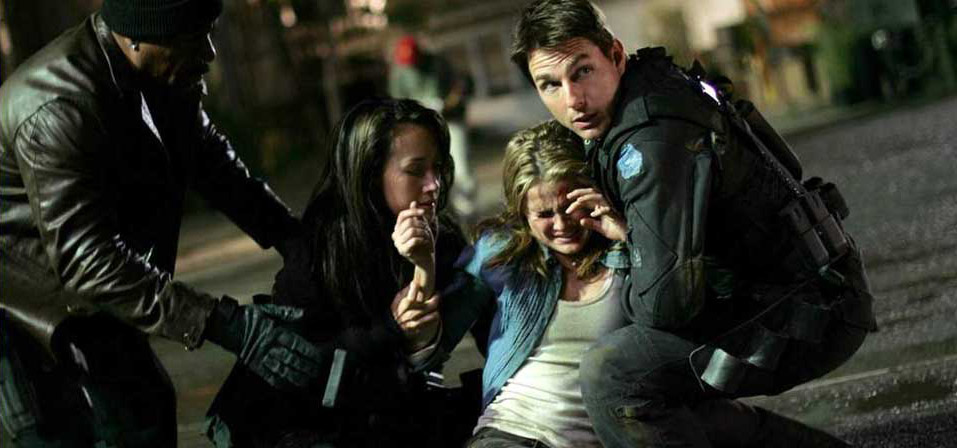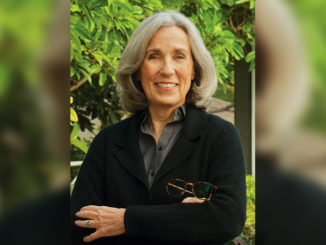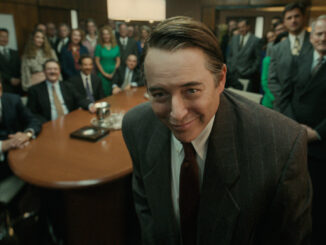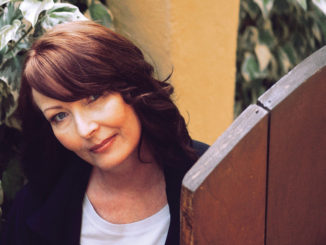
by Laura Almo • photos by Gregory Schwartz
When one envisions a summer action movie, comic book icons and larger-than-life characters such as Superman, the X-Men, James Bond, Indiana Jones and Rambo may very well come to mind. The genre has traditionally been targeted toward male audiences, and these movies are predominantly written and directed by males. Oftentimes, though, the real superheroes of these films can be found not only behind the scenes, but below the line. In the editing suites, for instance.
And for two of this summer’s hottest action films, the cutting room served as the headquarters for a trio of superheroines. Mission Impossible 3 (M:I:3), directed by J. J. Abrams and edited by Maryann Brandon, ACE, and Mary Jo Markey, ACE, opened in May, and Waist Deep, directed by Vondie Curtis-Hall and edited by Terilyn Shropshire, ACE, has a late June release date.
The three editors say their jobs on these films had nothing to do with their gender and everything to do with their skills and experience on the Avid.
“I do think that somewhere along the line the idea was put forth that these action movies were too intimidating for women,” acknowledges Markey. “But I don’t buy into that gender bias. I’m grateful there are other people who don’t buy into that either.” Action films have a tremendous––even relentless––amount of material. On M:I:3, according to Markey, there were times when three units were shooting a day, so the cutting room would receive a huge amount of footage. “Maybe that contributed to the idea that it’s a ‘man’s job’ to deal with that much material,” she says.
In the early days of the movie industry in the 1910s, ‘20s and into the ‘30s, women were the first editors because it was thought that they had the aptitude for detail in the cutting room. “It was something like knitting, tapestry or sewing, because you took these pieces of fabric, which is what film is, and you put them together,” explains Walter Murch, ACE, MPSE, in the 2004 documentary The Cutting Edge––The Magic of Movie Editing. “It was when sound came in that men began to infiltrate the ranks of the editors, because sound was somehow electrical. It was technical; it was no longer knitting.”
“I’m extremely fortunate to work with directors who allow me to cross into a diversity of genres,” – Terilyn Shropshire
These days, editing is both an art and a craft and, action film or not, it all comes down to the story. “It’s all about storytelling,” Markey emphasizes. “I approach action films the same way as anything else I’ve cut––I try to reflect the experience of the character that I am cutting at any given moment.”
Shropshire concurs: “Your storytelling is dictated by the film that is put in front of you, and being able to weed through all that material and find the story. Whether you’re a man or a woman, the challenges are going to be the same,” she says. “They don’t change by gender, they don’t change by race, they don’t change by anything.” Shropshire repeats the editor’s mantra: “It’s all in your story!”
While men frequently cut dramas and romance films, it admittedly is less common for women to cut action films. As Brandon puts it, “I guess there’s a macho thing connected with action films, but I just don’t see it that way.” Rather, she explains that in this industry, an editor is often hired based on her or his work history with the director. “A lot of it is really just based on relationships,” Brandon says, “For most films and projects, editing is a very personal relationship between the director and the editor––because they’re the ones who spend the most intimate time together.”
Indeed, over the years there have been some outstanding women editors–– Margaret Booth, Dede Allen, Thelma Schoonmaker, Verna Fields and Sally Menke to name just a few––who, because of their working relationships with directors and producers, have edited their share of big-budget, crowd-pleasing, summer action films.
In the case of M:I:3, both Brandon and Markey had a longstanding history with Abrams, whose director and producer credits include the television series Felicity, Alias and Lost. Both Brandon and Markey had worked with him for many years––Markey editing Felicity, Alias and Lost (the latter for which both she and Abrams won Emmy Awards), and Brandon serving as both editor and director on the television series Alias.

“J. J.’s a storyteller first and foremost; if you look at any of his stuff, it’s all about story,” says Brandon. “He just wanted people––myself and Mary Jo––who could tell stories. Whether we were women or men I don’t think was an issue. I would draw it on a storytelling line and what appeals to him.”
Further discounting gender roles, Markey recalls that for a time, three men were cutting the emotional drama Felicity while three women were cutting the action-adventure series Alias. “We used to just laugh about the fact that it was so counter-intuitive to the way Hollywood thinks,” she says. “But it was not counter-intuitive to the way that J. J. thinks. Those things are not important to him,” she says.
M:I:3 is a departure from the first two Mission Impossible films; it has a more involved storyline to accompany the action sequences. Ethan Hunt (Tom Cruise) is trying to keep his work and his personal life separate, but he has to face the fact that this is, well, impossible. Hunt has to find some way to integrate Julia (Michelle Monaghan) into his life to let her see who he really is and what kind of life he actually leads. Cruise handpicked Abrams to direct M:I:3 because he liked what he saw in the first two seasons of Alias—action, adventure and a realistic emotional life of the central character. The series’ protagonist, Sydney Bristow (Jennifer Garner), often finds herself in crazy, insane and even outlandish situations not dissimilar to those that Hunt faces in M:I:3.
Because Brandon and Markey had experience editing both action and emotional drama, when they were invited to edit M:I:3, it was a good fit. This is not to say, however, that an editor must have experience cutting action in order to take on an action film. Editors bring their own sensibility and storytelling skills to a project, whether it’s comedy, drama, romance or action, the women explain. “I don’t believe for a minute that you have to have done action before to do it well––as long as you’re bringing your commitment, your passion and your determination to do a good job,” says Markey.
“It’s all about storytelling, I approach action films the same way as anything else I’ve cut.” – Mary Jo Markey
Admittedly, the first time an editor cuts a chase scene it may take a little longer, but then again, a dialogue dinner scene with ten people could be infinitely more complicated in terms of getting the right rhythm, making sure the story is progressing and ensuring that all of the characters are shown throughout the scene. Nevertheless, action films have their own challenges, including the vast amounts of footage and a tight editing schedule––on M:I:3, decisions had to be made very early on because the material was then handed over to Industrial Light and Magic (ILM) to work on the special effects.
Brandon recalls one sequence in particular where Cruise was swinging 30 feet from the ground on a rope, and explains that working on the visual effects made the scenes real––creating backgrounds, determining the positions of bodies and explaining spatial relations. “The back-and-forth exchange with the people at ILM was both fun and illuminating,” she says. “They’re kind of looking at me and saying, ‘Well, you’re editing this; what do you want?’ And I’m kind of thinking, ‘You’re ILM, you know what you want.’ But then I realized, no, I’ve got to tell them what I want.
“It was so much fun to interact with ILM,” Brandon continues. “And it became bigger than just putting the film together; it became really shaping the picture.”
Waist Deep, a film about a man recently out of prison and trying to turn his life around, has its share of shoot-outs, car chases, violence and action, but Shropshire maintains that the crux of her job was to portray the director’s vision of the urban gangster world in the most authentic way possible. “I think that on a certain level, no matter what the extent of the action scenes are, it is still the minutiae of conveying the story,” she says.
This film is her second collaboration with director Curtis-Hall; their first film together was Redemption: The Stan Tookie Williams Story, a drama based on the life of the founder of the LA gang, the Crips, who reformed in prison but was executed last year. Shropshire says that if a high-profile director had looked at her resume, she probably wouldn’t be the top candidate to edit an action film. But it was her relationship with the director that landed her the gig.
“Whether we were women or men I don’t think was an issue.” – Maryann Brandon
“Editors get categorized too often to a certain type of film by those people who are unwilling to envision the versatility of the editor’s craft,” Shropshire explains. “It’s unfortunate because, as editors, we’re all looking to grow creatively and be able to show what our versatility is,” she says.
Shropshire suggests that breaking free of being pigeonholed as a certain kind of editor has everything to do with the director’s and editor’s relationship. “Basically, I’m extremely fortunate to work with directors who allow me to cross into a diversity of genres,” she says. “So as they’re stretching creatively, I’m able to stretch creatively as well, because they trust me with their material. They trust me with collaboration, with being able to help facilitate their vision.”
Stretching is good. It helps to improve one’s work to change things up a bit and cut different genres. Different types of film present different challenges––in action films, it may be the sheer quantity of footage and special effects, while in a drama it may be creating excitement and emotion solely through the dialogue. “Each film is different and I always say that every film prepares me for the next one in some way,” says Shropshire.
Now that women have broken through any perceived gender barrier to editing action films, perhaps Hollywood is coming full circle, back to the early days of cinema when they could––and did––edit everything.






